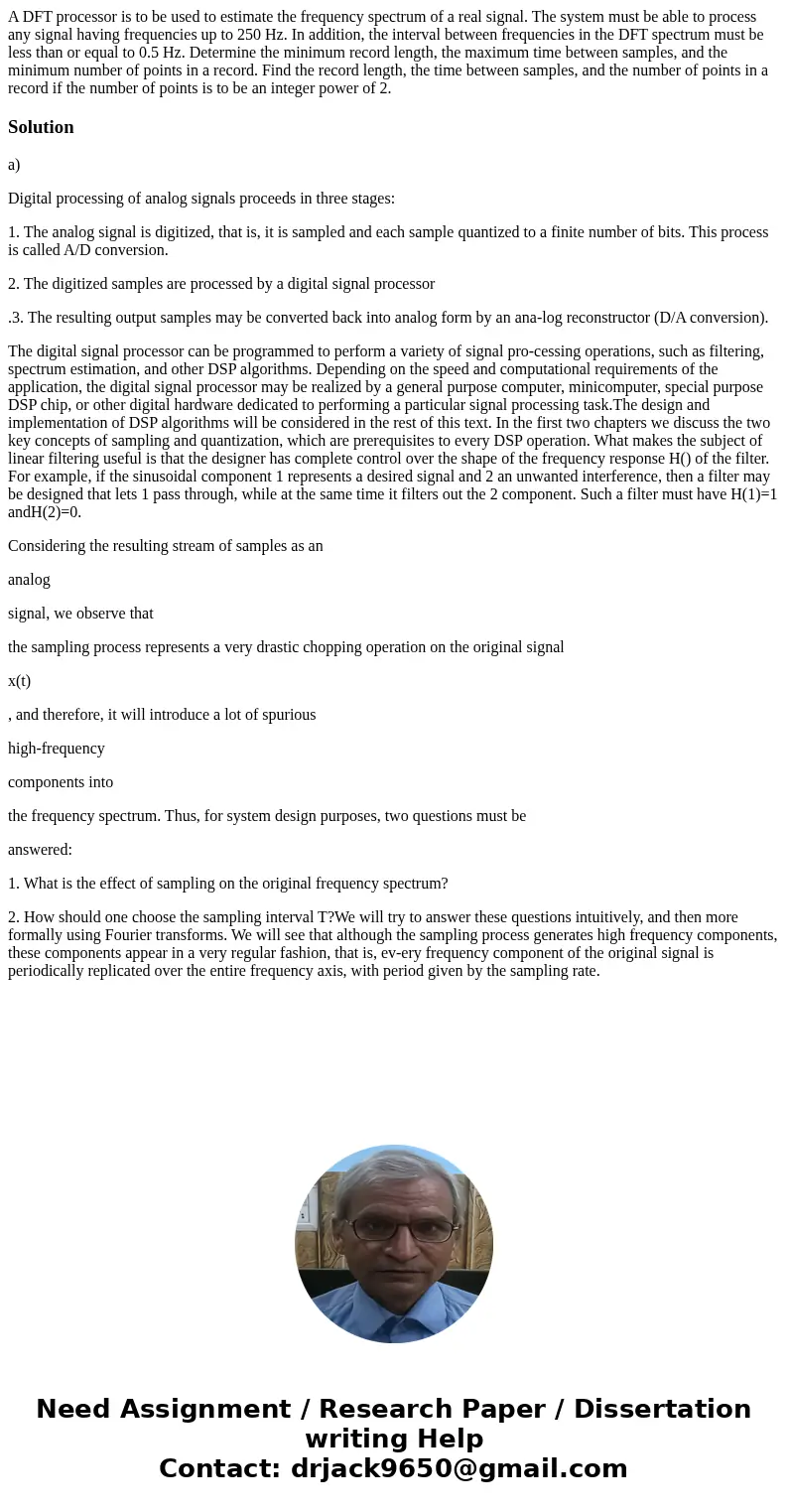A DFT processor is to be used to estimate the frequency spec
Solution
a)
Digital processing of analog signals proceeds in three stages:
1. The analog signal is digitized, that is, it is sampled and each sample quantized to a finite number of bits. This process is called A/D conversion.
2. The digitized samples are processed by a digital signal processor
.3. The resulting output samples may be converted back into analog form by an ana-log reconstructor (D/A conversion).
The digital signal processor can be programmed to perform a variety of signal pro-cessing operations, such as filtering, spectrum estimation, and other DSP algorithms. Depending on the speed and computational requirements of the application, the digital signal processor may be realized by a general purpose computer, minicomputer, special purpose DSP chip, or other digital hardware dedicated to performing a particular signal processing task.The design and implementation of DSP algorithms will be considered in the rest of this text. In the first two chapters we discuss the two key concepts of sampling and quantization, which are prerequisites to every DSP operation. What makes the subject of linear filtering useful is that the designer has complete control over the shape of the frequency response H() of the filter. For example, if the sinusoidal component 1 represents a desired signal and 2 an unwanted interference, then a filter may be designed that lets 1 pass through, while at the same time it filters out the 2 component. Such a filter must have H(1)=1 andH(2)=0.
Considering the resulting stream of samples as an
analog
signal, we observe that
the sampling process represents a very drastic chopping operation on the original signal
x(t)
, and therefore, it will introduce a lot of spurious
high-frequency
components into
the frequency spectrum. Thus, for system design purposes, two questions must be
answered:
1. What is the effect of sampling on the original frequency spectrum?
2. How should one choose the sampling interval T?We will try to answer these questions intuitively, and then more formally using Fourier transforms. We will see that although the sampling process generates high frequency components, these components appear in a very regular fashion, that is, ev-ery frequency component of the original signal is periodically replicated over the entire frequency axis, with period given by the sampling rate.

 Homework Sourse
Homework Sourse